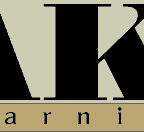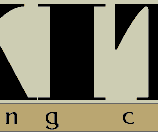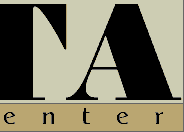 Save this page (64.8 kb)
Save this page (64.8 kb)
OFFICIAL BREED STANDARD
AKITA
AS RECEIVED FROM AKC 1960
HEAD - expresses dignity, friendliness and noble character; has a massive broad skull, rather flat on top with a stop well marked but not abrupt. The ears are erect and rather small, with wide base, and are carried slightly forward over the eyes.
The head should be free from wrinkle. The muzzle is of moderate length, deep and square with powerful jaw and level bite.
NOSE - black and rather large.
EYES - medium size, dark brown and rather triangular in shape.
The Akita has a thick, muscular neck without excessive dewlap. The neck widens gradually toward the shoulders which are muscular and powerful, with the shoulder blades laid well back. The wide, deep chest reaches down to the elbows, and ribs are well sprung. The back is straight and firm with loin well muscled and slightly tucked up. Bitches are a little longer in loin than dogs.
FORELEGS - set wide apart, are straight and strong with heavy bone. The feet are cat-like, with toes well arched-- close together. The hindquarters are muscular and powerful with hocks bent but straight in line.
TAIL - The breed is distinguished by a large tail, set high and carried over the back in a three quarters, full or double curl. When hanging down, the tip of the tail should brush the hocks.
COAT - These dogs have a double coat, the outer coat being straight and harsh with the under coat thick and furry. The outer coat is of medium length, shorter and softer on the head and legs and longer and harsher on the body and tail.
COLOR - The coat may be of almost any color from cream to black, including all shades of brown, red, grey and silver, as well as brindle. Some of the solid color dogs have a variety of shadings and coats may be silver tipped. No more than one-third of the coat may be white and the white may appear only on the muzzle as a blaze, on the chest or forelegs, as a collar, or on the hind paws and tip of tail.
Summary
HEAD - Massive, broad, rather flat skull, free from wrinkle with stop well marked but not too abrupt. Cheeks full, but not loose. Muzzle of moderate length, deep and square with powerful jaws and level bite. Nose large and black Ears erect, fairly short with rather wide base and carried forward. Eyes dark, of medium size. rather triangular in shape showing no haw. Neck powerful, muscular, without excessive dewlap and widening gradually toward the shoulder.
BODY - Longer than it is high, in proportion as 10 is to 9 (11 to 9 in bitches), with deep wide chest and ribs well sprung. Shoulders powerful and muscular with shoulder blades laid back at a 45 degree angle. Back straight and firm with loin well muscled and slightly tucked up, the loin in bitches being a little longer than in dogs. Legs are straight, large boned and strong. The forelegs are set well apart with pasterns at a slight angle to the lower arm. Hocks strong and bent, but straight In line. Feet cat-like with small well arched toes set close together Dewclaws to be removed from hind feet only.
TAIL - Large, set high and carried over the back with three quarters, full or double curl. Tip extending to the hocks when let down, well covered with hair.
COAT - Double coated, (the outer coat of medium length, straight and harsh, the undercoat thick and furry. Hair on the head and legs is shorter and some what softer.
COLOR - All colors from cream to black, including all shades of brown, red grey and silver. Coats may be brindle and solid color dogs may carry shadings or coats may be silver tipped. White may not exceed one third of the total area and may appear only on the muzzle as a blaze or on the chest, forelegs, hind paws, tip of tail or as a collar.
SIZE - Dogs 25 1/2 to 27 1/2 inches or more at the shoulder with bitches slightly smaller. Weight in proportion to size. usually 85 to 110 pounds for dogs and 75 to 95 pounds for bitches.
The New Complete Akita
Joan M. Linderman & Virginia B. Funk
Pages 93,94
The first Breed Standard, as accepted by the American Kennel Club and proposed by ACA in 1960, specified "A head free from wrinkle," "Coat of almost any color from cream to black" (all white was omitted), "Neck without excessive dewlap," "Size: Dogs 25 1/2 inches to 27 1/2 inches or more at the shoulder with bitches slightly smaller," "Weight in proportion to size, usually 85 to 110 pounds for dogs, 75 to 90 pounds for bitches." Disqualifying faults were not noted at the end of the Standard.
In 1963, after much study and concern, the Standard Committee submitted a revised "Standard of Perfection" to members of the Akita Club of America, which those present approved. It was better written than the first Standard and contained important additions and deletions. One controversial change was: Height: "Males, 25 inches to 28 inches or more; Bitches, 23 inches to 26 inches or more" with no mention of weight. Colors were specified as "Solids, Brindles, Pintos, Whites."
Most important change here was the addition of white. "Solid white dogs may have a liver nose but the black nose is more desirable." Head: "... free from wrinkle when at ease." Stop: added to the original "A stop well marked but not abrupt'' were the words "The furrow extends well up the forehead.'' Faults were included as follows:
| MINOR - Undesirable |
MAJOR - Disqualifying |
a. Round or light eyes
b. Excessive dewlap
c. Dark spots on tongue
d. Coarseness in bitches
e. Overrefinement in males
f. Looseness
g. Lack of spirit |
a. Drop or broken ears
b. Deafness
c. Uncurled tail
d. Altering length of coat
e. Shyness, viciousness or instability
f. "Pink" eye rims or lips
g. Butterfly nose |
In October 1965, another proposed Standard suggested weight of Akitas should be: "Males 90 to 140 pounds generally;
Bitches 70 to 100 pounds generally."
In 1972, much controversy prevailed among Parent Club members regarding the Standard of Perfection for Akitas as should be written in order to gain recognition for the breed with the American Kennel Club. The question of size, color and the "wrinkle" factor dominated.
On December 12, 1972, the Board of Directors of the American Kennel Club approved the following Standard for Akitas, which became effective April 4, 1973, and as of this writing remains as written although for the past ten years an ACA Standard revision committee has been actively pursuing change for the future. (1994)




